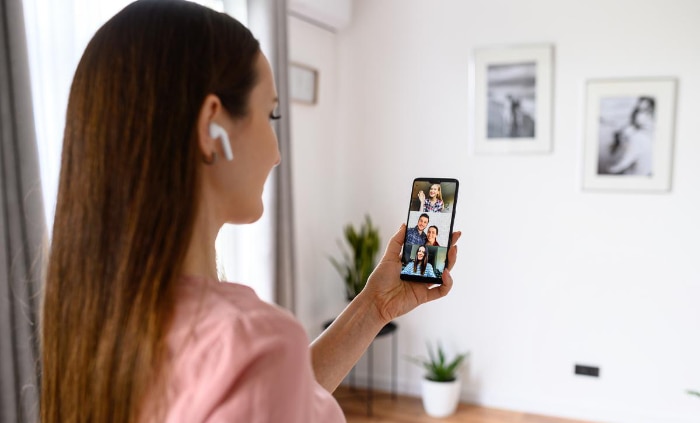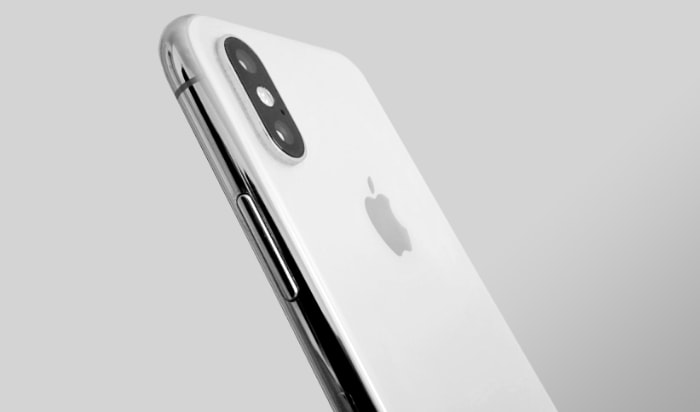Keeping Cool: Solutions for Phone Overheating on FaceTime

In the era of digitization and virtual connections, FaceTime has emerged as a pivotal tool, allowing users to connect face-to-face, regardless of their physical locations.
As Apple’s premier video calling app, FaceTime has made communicating with loved ones, conducting business meetings, or catching up with old friends as simple as tapping on a screen. However, an increasingly common concern among users is the overheating of their phones while using FaceTime.
Overheating not only disrupts ongoing calls but also poses a threat to the overall health of your device. In severe cases, it may even cause hardware damage or data loss.
This blog post aims to shed light on this issue, helping you understand why your phone might overheat during a FaceTime call, the potential dangers of this problem, and the steps you can take to prevent it.
Understanding the Problem
Overheating in a phone isn’t just about the device becoming too hot to hold comfortably. Technically, it occurs when your phone’s internal temperature rises beyond the optimal range.
This increase in temperature can cause the device to slow down, drain the battery rapidly, and, in extreme cases, shut down or restart without warning. In a nutshell, when we talk about a phone overheating, we’re discussing a situation that can impact the functionality, safety, and lifespan of your device.
Why Do Phones Overheat in General?
To understand the specific case of FaceTime-induced overheating, we need first to grasp why phones overheat. Overheating typically happens when the phone’s CPU (Central Processing Unit) is working overtime.
This can be due to several reasons, including running resource-intensive apps, multi-tasking, prolonged usage, faulty batteries, or having too many active processes in the background. Environmental conditions, like high ambient temperatures or direct sunlight, can also contribute to your phone getting hot.
Why Does FaceTime Cause a Phone to Overheat?
FaceTime, like many other video calling apps, demands significant resources from your device. It requires substantial processing power to transmit audio and video in real-time.
Furthermore, if you’re using other apps simultaneously, it adds to the load on your device’s CPU, making overheating more likely. Another often overlooked factor is the use of phone covers or cases that may prevent efficient heat dissipation, thus contributing to the problem.
Potential Dangers and Problems Associated with an Overheating Phone
Overheating can have several adverse effects on your device. For starters, it can lead to poor performance, with apps lagging or crashing, and diminished battery life as the phone tries to cool down.
Continued overheating can damage the phone’s components, leading to hardware failure over time. In worst-case scenarios, batteries of certain models have been known to swell or even explode. Apart from the possible harm to the device, it also raises safety concerns for the user.
Factors Contributing to Phone Overheating During FaceTime
Knowing what causes your phone to overheat during FaceTime calls can empower you to prevent it effectively.
Lengthy Calls on FaceTime
One of the primary factors that contribute to phone overheating while on FaceTime is the duration of the call. Long conversations require the device to work at high performance for extended periods, causing the processor to generate more heat.
Furthermore, the display being turned on for such long intervals also contributes to the rise in temperature.
Simultaneous Usage of Other High-Processing Applications
If you’re multitasking with other resource-intensive applications while on a FaceTime call, your phone has to work harder. This additional load on the processor could cause the device to heat up.
Streaming videos, playing games, or using graphic-intensive apps in the background while FaceTiming could contribute to overheating.
Hardware and Software Conditions Contributing to Overheating
Your phone’s hardware and software conditions can significantly influence how much it heats up during FaceTime calls. For instance, an older device with outdated hardware might struggle more with heat dissipation than newer models.
Similarly, if your phone’s operating system or the FaceTime app itself isn’t updated, it could cause issues leading to overheating. Bugs in the software or malfunctions in the hardware can also contribute to this problem.
Environmental Factors Contributing to Overheating
The environment in which you use your device can play a role in how much it heats up. High ambient temperatures, direct exposure to sunlight, or using your device in a warm room can cause your phone to overheat.
Moreover, if you’re charging your device while on a FaceTime call, it may also contribute to a rise in the device’s temperature.
How to Prevent Phone Overheating While on FaceTime

Keep Apps and Device Software Up-to-Date: Regularly update your apps and your device’s operating system. Software updates often include patches for bugs that might be causing your phone to overheat.
Avoid Overuse of Phone Resources: Try to close unnecessary apps running in the background before starting a FaceTime call. This practice will reduce the load on your device’s CPU and prevent it from overheating.
Control Environmental Factors: Avoid using your device in excessively hot environments or direct sunlight. Also, consider removing your phone case during long FaceTime calls to aid heat dissipation.
Best Practices for Maintaining Your Phone’s Health
Regular Rest Periods: Like any other electronic device, your phone needs rest periods. Avoid back-to-back heavy usage, and give your device a break between long FaceTime calls.
Proper Charging Practices: Avoid using your phone heavily while it’s charging, as this can generate excess heat. Also, consider using original chargers and cables for your device, as low-quality accessories can cause overheating.
Regular Cleaning: Ensure that your device’s physical ports and casing are kept clean. Dust and debris can obstruct heat dissipation and contribute to overheating.
Phone Case Selection: Consider using a phone case made from heat-resistant material. Some cases can insulate your device and trap heat, so choose wisely.
By incorporating these tips and practices into your routine, you can effectively manage and prevent your phone from overheating during FaceTime calls. This not only ensures uninterrupted conversations but also contributes significantly to the lifespan and performance of your device.
What to Do if Your Phone Overheats on FaceTime
Close All Unnecessary Apps: If your phone starts overheating during a FaceTime call, the first step is to close any unnecessary apps running in the background.
Turn Off Your Device: If the device continues to heat up, consider turning it off for a few minutes to allow it to cool down.
Remove Phone Case: If your phone case is trapping heat, removing it could help lower the device’s temperature.
When to Consider Professional Assistance or Contacting the Manufacturer
Persistent Overheating Issues: If your phone consistently overheats during FaceTime calls or other operations, it might be a sign of a deeper issue. In this case, consider taking your phone to a professional or reaching out to the manufacturer’s customer service.
Physical Damage or Malfunction: If overheating is accompanied by other issues such as screen discoloration, distortion, or malfunctioning apps, it is crucial to seek professional help.
Long-Term Solutions and Preventative Measures to Avoid Recurrence
Routine Device Maintenance: Regularly updating your apps and operating system, cleaning your phone, and managing its usage can help prevent the recurrence of overheating.
Adequate Device Usage and Storage: Avoid using or storing your device in high temperatures, and refrain from heavy usage while the device is charging.
Appropriate Accessories: Use quality phone cases that do not trap heat, and always use recommended chargers and cables for your device.
Following these steps can help manage a situation where your phone overheats on FaceTime, ensuring the problem doesn’t escalate and cause permanent damage to your device.
Conclusion
In this ever-growing era of digital communication, tools like FaceTime have become invaluable for personal and professional use. However, the issue of phone overheating during FaceTime calls can pose significant challenges, ranging from disrupted conversations to potential damage to the device itself.
By understanding why this overheating occurs and the factors contributing to it, we can implement effective strategies to prevent and manage it.
In this blog post, we have not only highlighted the reasons behind the overheating of phones during FaceTime calls, but we’ve also provided practical tips and measures to prevent this from happening.
From keeping software up-to-date and closing unnecessary apps, to controlling environmental factors and maintaining your device’s overall health, these suggestions can go a long way in ensuring your FaceTime experience remains smooth and your device remains safe.
Furthermore, we’ve discussed the immediate steps to take when your phone overheats, when to seek professional help, and how to incorporate long-term solutions to avoid such issues in the future.
By following these guidelines, you’re not just preventing overheating during FaceTime calls, but you’re also contributing to the longevity and optimal performance of your device.
As we conclude, remember that technology serves us best when it’s well-maintained. Keeping your phone cool during FaceTime calls is one step towards that maintenance. As you continue to connect with loved ones or conduct business meetings via FaceTime, let the warmth be in your conversations, not your device.


